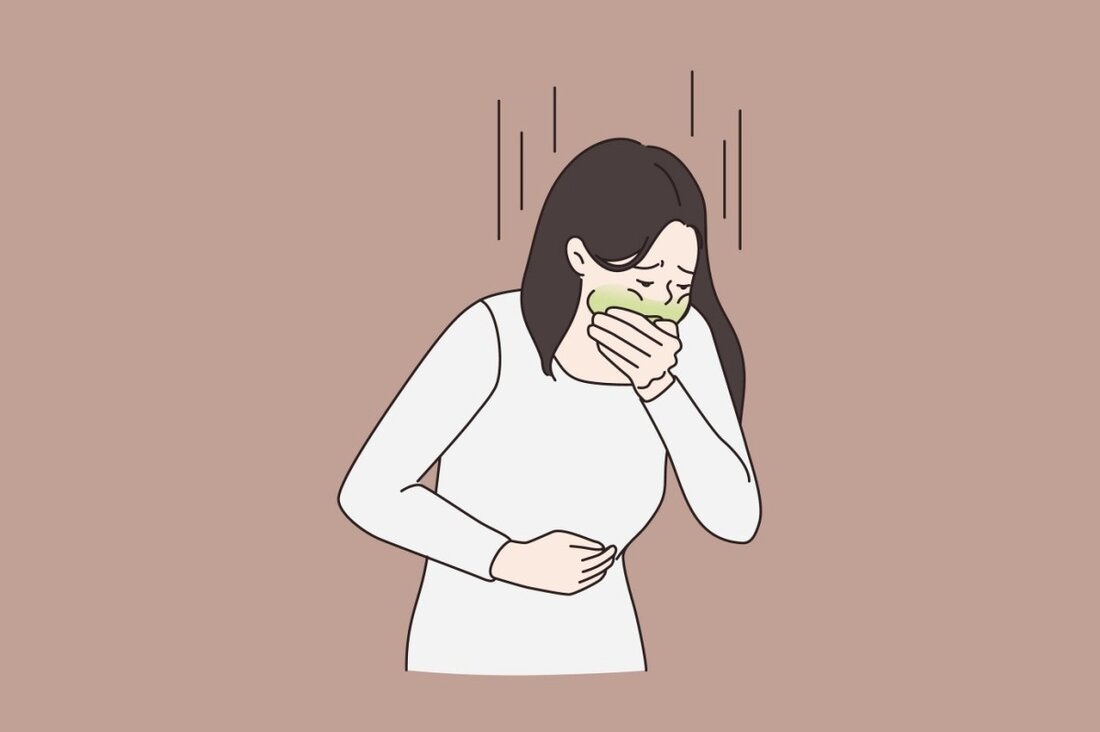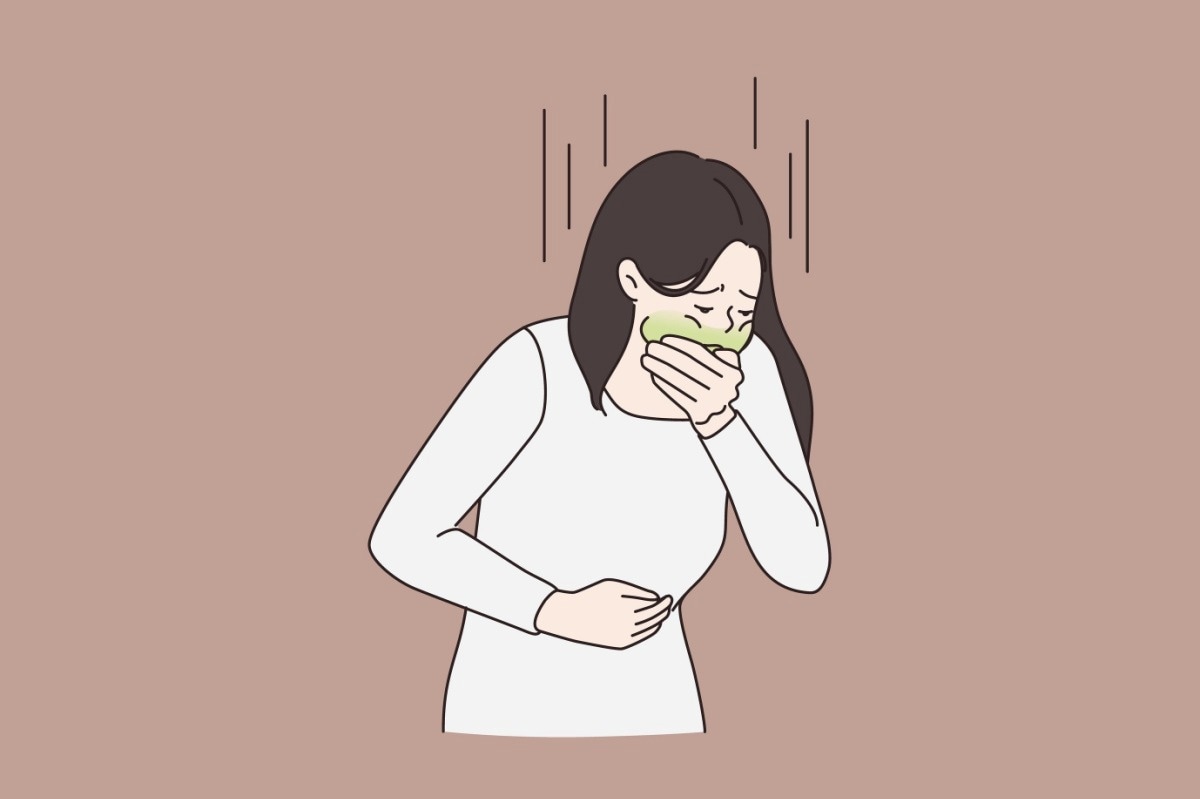Scientists are mapping neural pathways that lead to vomiting after eating contaminated food
In most cases, the presence of toxins in food can cause nausea and vomiting. These are physical defenses aimed at minimizing the duration of exposure to the toxin. The pathways by which the brain detects the presence of such toxins and synchronizes various defense mechanisms remain poorly understood. Learning: The gut-brain axis for toxin-induced defense responses. Image credit: Drawlab19 / Shutterstuck.com A new Cell journal article describes a system by which gut-brain pathways coordinate with brain circuits to trigger these defense responses. This involves a set of neurons called Htr3a+ that act on the dorsal vagal complex (DVC) to cause gagging and reflex avoidance of certain tastes...

Scientists are mapping neural pathways that lead to vomiting after eating contaminated food
In most cases, the presence of toxins in food can cause nausea and vomiting. These are physical defenses aimed at minimizing the duration of exposure to the toxin. The pathways by which the brain detects the presence of such toxins and synchronizes various defense mechanisms remain poorly understood.

A new one cell Journal article describes a system by which gut-brain pathways coordinate with brain circuits to trigger these defense responses. This involves a set of neurons called Htr3a+ that act on the dorsal vagal complex (DVC) to cause gagging and reflex avoidance of certain tastes.
The study results suggest that these reactions are triggered by both chemotherapy and food poisoning, with these toxins acting through a common set of circuits.
introduction
Gagging and vomiting involve motor responses that are triggered reflexively, although they are initiated by the brain. These are accompanied by a feeling of nausea, thus helping the person identify the toxic substance in order to avoid it in the future. This phenomenon is known as conditioned taste avoidance (CFA).
Nausea and vomiting are the most common side effects of chemotherapy. This has led to intensive research into the mechanism by which these reactions arise. Some studies have suggested a gut-brain axis as the underlying cause of both reactions when the body is exposed to an enterotoxin or chemotherapy drug.
Vagotomy as well as the use of blockers of the 5-hydroxytryptamine 3 receptor (5-HT3R) and the neurokinin 1 receptor (NK1R) successfully prevent both vomiting and nausea. However, this leaves several questions unanswered, including the cells involved, their projections, and molecular signals that mediate this response.
About studying
The current study uses laboratory mice to answer such questions. Although mice do not show an emetic response to emetics, they can exhibit conditioned taste avoidance and appear to gag, making them a suitable animal model.
Mice were exposed to staphylococcal enterotoxin A (SEA), which causes food poisoning and vomiting. This has been found to trigger a peculiar mouth-opening response that lasts about five times longer, as well as a wider extension of the jaw than spontaneous responses. This resembled a choking-like behavior and was accompanied by synchronous electromyographic findings of the diaphragm and abdominal muscles.
Although these are inspiratory and expiratory responses, respectively, they showed simultaneous bursts of activity, in contrast to the alternating activity typical of normal breathing in mice. Furthermore, during this muscle action, the diaphragm showed more robust and rapid activity during the opening phase than during the mouth closing phase, supporting the hypothesis that it is a type of choking behavior.
SEA also induced CFA in mice, with both CFA and retching reduced by granisetron, a 5HT3R antagonist, and CP-99994, an NK1R blocker. This suggests that SEA acts through circuits involving these receptors.
Study results
As previous research suggested, the scientists found that the vagus nerve mediates vomiting in response to toxins. Furthermore, cutting the diaphragmatic branches of the vagus nerve on both sides significantly reduced both gagging and CFA in mice.
E-Book Antibodies
Compilation of the top interviews, articles and news from the last year. Download a free copy
Using genetic labeling methods, a population of Hrt3a+ neurons was identified. These vagal sensory neurons carry signals triggered by toxins when they encounter enterochromaffin cells. These signals eventually reach Tac1+ neurons in the DVC.
Chemogenetic inactivation of DVC neurons caused reduced choking in response to SEA. These findings suggest the presence of a gut-brain axis that mediates SEA-induced retching and CFA.
Over a third of DVC Tac1+ neurons were activated by SEA. These neurons are known to produce neurotransmitters such as glutamate and specific Tac1+-encoded neuropeptides.
Specific Tac1+-encoded neuropeptides bind to NK1R, an important vomiting signal, supporting the theory that these proteins, like glutamate, are key to nausea and retching when the animal is exposed to SEA. This has not been found with other DVC neurons or other emetic agents such as lithium chloride.
A long pathway with a single synapse was found to directly connect Tac1+ neurons with specific Hrt3a+ vagal sensory neurons on the same side and multiple brain areas. These vagal neurons appear to respond to 5-HT from the enterochromaffin cells, with the nerve endings of 5-HT in close proximity to the enterochromaffin cells. Furthermore, the enterochromaffin cells likely mediate a selective response to SEA.
This Tac1+-Hrt3a+-enterochromaffin circuit forms the gut-brain pathway that mediates defensive nausea, vomiting, and retching in response to SEA. Tac1+ neurons determine how long and intense each choking movement is in response to signals transmitted by Hrt3a+ vagal sensory neurons in the gut.
Stimulation of these neurons by optogenetic signals resulted in a choking-like behavior in a dose-dependent manner. This was confirmed by chemogenetic activation leading to CFA.
“These data suggest that activation of Tac1+ DVC neurons is sufficient to trigger defense responses in mice.”
DVC neurons project to different areas of the brain depending on their location in the DVC. As a result, different subgroups caused selective retching or CFA in response to SEA.
Indeed, chemogenetic activation confirmed that each of these responses was selective for a specific subset. These are represented by the Tac1+ DVC-rVRG and DVC-LPB signaling pathways, respectively.
The first of these may be due to the recruitment of respiratory neurons, which subsequently leads to gag-like responses. The second may involve CGRP+ neurons that mediate conditioned taste aversion (CTA) learning, thereby causing CFA.
Tac1+ neurons also appear to contribute to chemotherapy-induced choke-like and CFA responses, with the same selectivity of response observed for different neuron subsets after intraperitoneal injection of the chemotherapy drug doxorubicin.
Interestingly, in vitro experiments suggested indirect activation of the gut-brain circulation by SEA and doxorubicin, as direct exposure to these toxins did not activate nasogastric (NG) or enterochromaffin cells. The toxins appear to work by inducing inflammation, which causes the release of interleukin 33 (IL-33). This alarmin molecule binds to its receptor on the enterochromaffin cells, thereby causing 5HT release, which stimulates the vagal sensory cells.
What are the effects?
The current study reports the existence of a gut-brain signaling pathway that mediates toxin-induced vomiting and nausea through two different brain circuit systems in mice. By expelling food from the stomach, these reactions protect the host from toxins in the food.
The existence of Tac1+ cells, which are a subset of DVC cells that are key to these toxin-induced defenses, was revealed. Another subset of cells known as AP neurons may also be involved in these responses.
Further studies should investigate the reason for the residual choking-like behavior after ablation of the diaphragmatic vagal innervation, which could be due to the role of the efferent spinal nerves. The effects of ablation of multiple genes in the Tac1+ neuron population on toxin-induced defense also remain to be investigated.
Reference:
- Xie, Z., Zhang, X., Zhao, M., et al. (2022). Die Darm-Hirn-Achse für Toxin-induzierte Abwehrreaktionen. Zelle. doi:10.1016/j.cell.2022.10.001.
.

 Suche
Suche
 Mein Konto
Mein Konto
